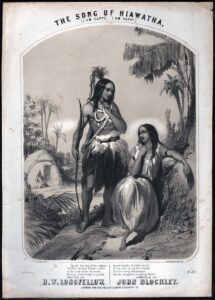Minnesota: Land of 10,000 Lakes
Echoes of The Song of Hiawatha.
By: Kelli Ballard | March 11, 2020 | 491 Words

(Photo by: Dukas/Universal Images Group via Getty Images)
Minnesota became the 32nd state to join the Union on May 11, 1858. Its nicknames include “Land of 10,000 Lakes” (although it actually has more than 11,800), “North Star State,” and “Gopher State.” It got its name from the Dakota words meaning “sky-tinted water” because of the state’s blue skies that reflect on the lakes.

Like other lands in America, Minnesota was first inhabited by indigenous tribes. The largest in the area was the Dakota Sioux, and other tribes included the Cheyenne, Cree, and Ojibwa, who had the territory to themselves until the Europeans started arriving in the 1600s. The French were the first to explore the area, mapping out the coast of Lake Superior and claiming the land for France. In 1671, they made an arrangement with the Ojibwa to trade for furs. In 1679, Daniel Graysolon, Sieur Du Luth, helped the Dakota and Ojibwa tribes negotiate peace; the city of Duluth is named after him.

(Photo by Transcendental Graphics/Getty Images)
The French and Native Americans continued to work this way for decades as more settlers traveled to the area to make a new life. In the 1700s, war broke out between the British and French. When the British won in 1763, they took over the eastern part of the territory. That didn’t last, though, because 20 years later the Americans won the Revolutionary War, and in 1803 the U.S. bought the remaining portion from France as part of the Louisiana Purchase.
President Thomas Jefferson sent explorers to learn more about the new territory and to find the headwaters of the Mississippi River. Zebulon Pike was the first to try in 1805 and although he never found what he was looking for, he was able to obtain more land by signing a treaty with the Dakota people.
Almost thirty years later, in 1832, Henry Schoolcraft found the source of the Mississippi River with help from the Ojibwa tribe. He named the area Lake Itasca. His stories combined with legends told by the Native Americans inspired poet Henry Wadsworth Longfellow to write The Song of Hiawatha.

(Photo by Smith Collection/Gado/Getty Images)
Eventually, two cities were built on each side of the Mississippi River: The one on the west side became Minneapolis, and the city on the east of the river became St. Paul. These are known today as the Twin Cities and are the two largest in the state.
Key industries in the region have been logging and agriculture (it grows the most sugar beets, sweetcorn, peas, and farm-raised turkeys in the nation), as well as mining. Residents are famed for their “Minnesota nice” demeanor, which is thought to be friendly, polite, and courteous.
Interesting Facts:
- A five-year-old girl received the first successful open-heart surgery at the University of Minnesota in 1952.
- Downtown Minneapolis has the world’s most extensive pedestrian pathways that are all indoors. They stretch eight miles, connecting 73 blocks.
















